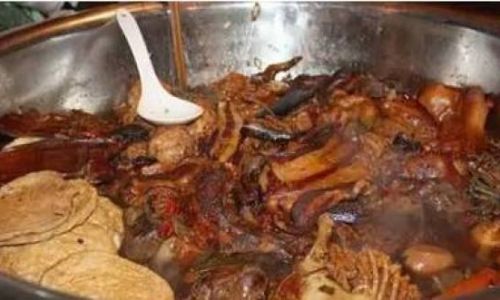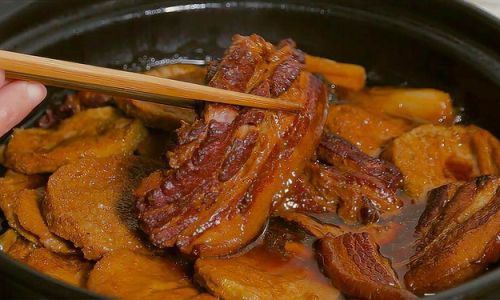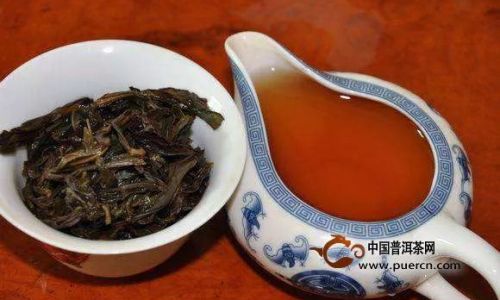Introduction
In the culinary landscape of China, regional specialties often serve as a testament to the rich diversity and deep-rooted traditions of the country’s gastronomy. Among these, Xuzhou-style Bazi Rou, also known as Pork Belly Stew, stands out as a hearty and flavorful dish that has captured the hearts and taste buds of many. Originating from the city of Xuzhou in Jiangsu Province, Bazi Rou is characterized by its tender, succulent pork belly slow-cooked in a savory broth infused with an array of spices and aromatics. This tutorial aims to provide a comprehensive guide to making authentic Xuzhou-style Bazi Rou at home, allowing you to relish this delightful dish in the comfort of your own kitchen.
Ingredients
Before diving into the preparation, let’s gather all the necessary ingredients:
- Pork Belly: 2 kg (preferably with a good fat-to-meat ratio for optimal texture and flavor)
- Soy Sauce: 100 ml (preferably dark soy sauce for color and depth)
- Rock Sugar: 50 g (adjust to taste for sweetness)
- Shaoxing Wine: 50 ml (for a unique aroma and flavor enhancement)
- Ginger: 3 slices (about 30 g), thinly sliced
- Garlic: 6 cloves, lightly crushed
- Green Onions: 2 stalks, tied into a knot
- Star Anise: 2 pieces
- Cinnamon Stick: 1 piece (about 3 cm long)
- Fennel Seeds: 1 teaspoon
- Cloves: 6 pieces
- Cardamom Pods: 2 pods, lightly crushed
- Water: Enough to cover the pork belly completely
- Salt: To taste
- Cooking Oil: 2 tablespoons
- Sesame Oil (optional): for garnishing
- Fresh Green Onions (optional): finely chopped, for garnishing
Preparation

-
Preparing the Pork Belly:
- Start by rinsing the pork belly thoroughly under cold running water to remove any impurities.
- Pat the pork belly dry using paper towels to ensure even cooking and to prevent splattering during the frying process.
- Cut the pork belly into large, manageable pieces, approximately 5-6 cm in thickness. This size allows for even cooking and easy handling.
-
Searing the Pork Belly:
- Heat a large, heavy-bottomed pot or wok over medium-high heat. Add the cooking oil and let it heat up.
- Sear the pork belly pieces on all sides until they turn a golden brown color. This not only adds a layer of flavor but also helps to lock in juices, ensuring a moist and tender final dish.
- Remove the seared pork belly pieces from the pot and set them aside temporarily.
-
Making the Broth:

- In the same pot, reduce the heat to medium and add the rock sugar. Stir constantly until the sugar melts and begins to caramelize, turning a deep amber color. Be careful not to let it burn, as this will impart a bitter taste to the broth.
- Once the caramel is ready, quickly add the seared pork belly pieces back into the pot, carefully as the caramel may splatter. Pour in the Shaoxing wine to deglaze the pot, scraping up any browned bits stuck to the bottom.
- Add the soy sauce, ginger slices, garlic cloves, tied green onions, star anise, cinnamon stick, fennel seeds, cloves, and cardamom pods. Pour in enough water to fully submerge the pork belly pieces.
- Bring the mixture to a boil, then reduce the heat to low. Cover the pot with a lid and let the pork belly simmer gently for about 2-3 hours, or until the meat is tender and can be easily pierced with a fork.
-
Seasoning and Final Touches:
- After the pork belly has cooked through, taste the broth and adjust the seasoning with salt as needed. Remember that the soy sauce already contributes a significant amount of saltiness, so be cautious with additional salt.
- If you prefer a thicker broth, you can remove the pork belly pieces and let the broth simmer uncovered for an additional 15-20 minutes to reduce and concentrate flavors.
- Once the broth has reached your desired consistency, return the pork belly pieces to the pot and let them warm through.
-
Serving:
- Transfer the cooked pork belly pieces to a serving dish, spooning some of the fragrant broth over them.
- Garnish with a drizzle of sesame oil and a sprinkle of finely chopped fresh green onions for an added touch of freshness and color.
- Serve hot, accompanied by steamed rice or noodles to soak up the delicious broth.
Tips for Perfect Bazi Rou

- Quality Ingredients: Using high-quality pork belly and fresh spices makes a significant difference in the final flavor of your Bazi Rou.
- Patience: Slow cooking is key to achieving the tender, melt-in-your-mouth texture of the pork belly. Rushing the process can result in dry, tough meat.
- Adjusting Seasoning: Taste the broth frequently during cooking and adjust the seasoning as needed. Remember that flavors will intensify as the dish cooks.
- Serving Suggestions: Pair your Bazi Rou with steamed rice, noodles, or even pickled vegetables to balance the rich flavors of the dish.
Conclusion
Making Xuzhou-style Bazi Rou at home may seem like a daunting task, but with the right ingredients and a bit of patience, you can recreate this delicious dish with remarkable success. The combination of tender pork belly, savory broth, and aromatic spices creates a harmonious flavor profile that is both comforting and satisfying. Whether you’re hosting a dinner party or simply treating yourself to a hearty meal, Xuzhou-style Bazi Rou is sure to impress and delight. So, gather your ingredients, follow this guide, and enjoy the culinary journey of creating your very own batch of this timeless Chinese specialty.





0 comments